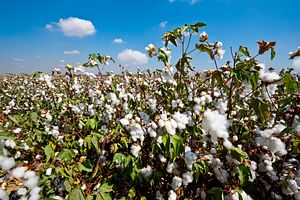In its annual report on human trafficking the U.S. State Department decided to upgrade Uzbekistan’s status. The move has riled human rights organizations, which say the country’s cotton industry exists on the backs of forced laborers.
Since its first appearance in the annual Trafficking in Persons (TIP) report in 2003, Uzbekistan has nearly always been placed on Tier 3–the lowest tier–or the Tier 2 Watch List. While both Tier 2 and Tier 3 indicate that the government does not comply with minimum standards for eliminating human trafficking, those in Tier 3 are also not making “significant efforts” to do so.
Human trafficking is a stubborn problem and occurs to some degree everywhere in the world. The report covers various forms of trafficking–perhaps better labeled as “modern slavery”–from child sex trafficking to forced labor. The key component is compelling labor through force, fraud, or coercion. Trafficking does not necessarily entail kidnapping and crossing borders. Uzbekistan relies upon forced labor–of children and adults–for the annual cotton harvest.
Uzbekistan spent five consecutive years on the Tier 2 Watch List, which was possible only because of special waivers from the secretary of state. Technically, a country that has been ranked on the Tier 2 Watch List for two consecutive years and would otherwise be ranked on the Watch List in the third year must be automatically downgraded. A 2008 amendment to the Trafficking Victims Protection Act allows for the secretary of state to waive the downgrade for two consecutive years. After those two additional years, the country must either be upgraded to Tier 2–meaning progress has, indeed, been made–or downgraded to Tier 3.
In 2013, after five years on the Tier 2 Watch List Uzbekistan was automatically downgraded. Moving Uzbekistan back to the Tier 2 Watch List is less an indication of improvement than an indication that the U.S. government wishes to keep the country off the worst offender lists and the related funding restrictions required by law. President of the Association for Human Rights in Central Asia Nadejda Atayeva said, “The U.S. effectively sent a message to Uzbek authorities that forced labor of millions of its citizens is cost-free.” Cotton Campaign, a human rights group focused on Uzbekistan’s cotton industry, wrote a letter to Secretary of State John Kerry, expressing their disappointment: “Having made the unfortunate decision to upgrade Uzbekistan to Tier 2 Watch List, we believe it is more incumbent than ever on the U.S. government to increase pressure on Tashkent to eliminate forced labor from the cotton sector.”
In the 2015 report, the State Department says that the “Government of Uzbekistan does not fully comply with the minimum standards for the elimination of trafficking; however, it is making significant efforts to do so.” The State department points specifically to legal measures enacted which aim to cut down on child labor during the annual cotton harvest. Uzbekistan has also agreed to allow the International labor Organization (ILO) to monitor the 2015-2017 harvests in five World Bank-funded project areas. But, despite such efforts, the report notes, “serious concerns persist, as government-compelled forced labor of adults remained endemic in the 2014 cotton harvest.”
One of the unique aspects of forced labor in Uzbekistan is that it is “government-compelled.” This should, rightly, draw a critical eye to government reports on its own progress as well as greater attention to government attempts to hide violations. The report notes that Uzbekistan fined school directors who used child labor but also states that government officials, under pressure to fill quotas, still resorted to child labor. Then there are the adults. More than a million people participate in the harvest–many of them teachers, doctors, and other professionals who do so because refusing means losing their jobs.
Civil society and human rights groups that attempt to report on forced labor are under consistent pressure in Uzbekistan. The horrific ordeal of Elena Urlaeva earlier this year illustrates the problem. Urlaeva was detained while taking pictures of adults forced to prep the harvest fields and then sexually abused by police looking for her memory card.
Accordingly, the recommendations for Uzbekistan include stopping the use of child labor, ceasing to compel adults to labor, and allowing civil society to monitor the harvest. The same recommendations are present–often with the same language–in every report since 2009. Cotton first appears in the 2007 report, though there is no mention of child labor. In 2008, child labor makes it into the report.
Tellingly, when Uzbekistan first appeared on the list–in 2003–it was ranked by the state department as a Tier 3 country, but was upgraded by presidential determination to Tier 2. The 2003 report makes not even a single reference to cotton.
































